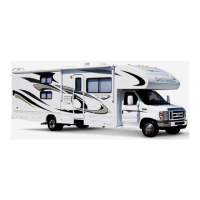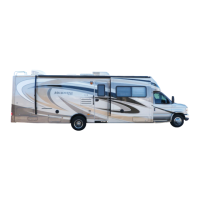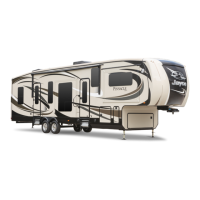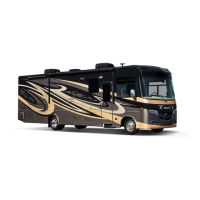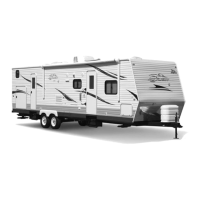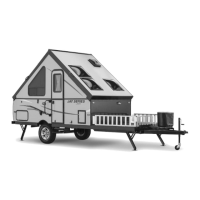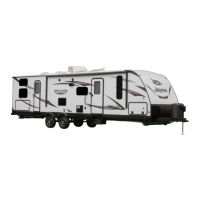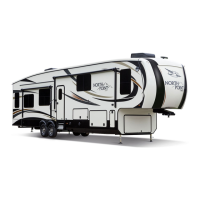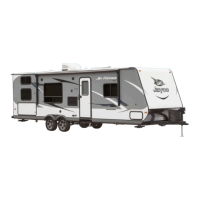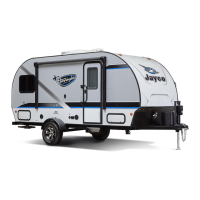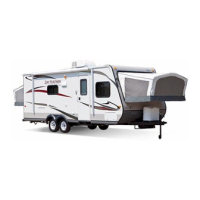SECTION 7
PLUMBING SYSTEMS
4. Place the utility center valves in the
“Country Fill” position.
5. Turn ON the water pump.
6. Enter the RV and open the cold water
supply faucets to bleed air from the water
lines. When the water lines are nearly full,
you may experience some "air pockets."
Allow them to escape before closing the
cold water supply faucets.
7. The water heater will fill first, followed by
the supply lines and faucets.
8. When at your campsite, turn the
appropriate (12-volt or 120-volt) water
heater control switch ON.
To disconnect
During the filling process, periodically check
the fresh water tank level using the monitor
panel located in the Command Center. When
the fresh water tank is full, it is normal to see
water running from the fresh water overflow
tubes onto the ground.
9. Shut OFF the water pump.
10. Disconnect the non-toxic drinking water
hose and reinstall the city water
connection inlet cap.
USING THE UTILITY CENTER
N
ORMAL SETTING
Generally speaking, this setting allows you to
use the water system when dry camping.
1. If needed, sanitize the water system prior
to travel.
2. Turn the appropriate (12-volt or 120-volt)
water heater control switch ON.
3. Move the “water heater bypass valve” to
the NORMAL position.
4. Place the utility center valves in the
“Normal” position.
5. Turn on the water pump (make sure you
have sufficient 12-volt power).
6. Water will be pumped from the fresh water
tank to all faucets.
SANITIZING THE PLUMBING SYSTEM
Potable water systems require periodic
maintenance to deliver a consistent flow of
fresh water. For your personal safety, the
plumbing system should be sanitized when
your RV is new, at the beginning and end of
each season and when the water system
becomes contaminated (or approximately
every three months of use).
How to sanitize
1. Level the RV and drain the fresh water
system.
2. Prepare a chlorine solution using 1/4 cup
of household bleach (sodium hypochlorite
solution) to one gallon (3.785 liters) of
water in a container. Prepare one gallon of
solution for every 15 gallons of tank
capacity. This will result in a residual
chlorine concentration of 50 ppm in the
water system.
If a 100-ppm concentration is required as
discussed in step 12 use ½ cup of
household bleach with one gallon of water
to prepare the chlorine solution. One
gallon of the solution should be used for
each 15 gallons of tank capacity.
3. At the intake hose to the city fill
connection, place the free end of the
intake hose in the bucket of chlorine
solution.
To assist the siphoning process, put the
container on a surface approximately two feet
above ground level. Turn the water pump ON.
4. Turn the water heater valves to the
“BYPASS” position
Failure to sanitize the potable water
system could result in death or serious
illness.
Chlorine is poisonous. Always recap the
household bleach bottle and clean utensils
and containers after use.
50
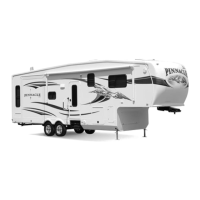
